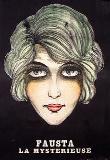A Request
Black and white cinematography is mostly a lost art, to be found only in a few TV commercials. No longer do we have new films where the audience is compelled to see what is not there, like Jezebel’s red gown (the gown was there, but we saw it as red even when it was filmed in b&w), or where Technicolor is only used twice for sharp emphasis while the black and white scenes are in complete full focus, like in The Picture of Dorian Gray. Even in the days before digitalizing, the film was so well photographed you could count the cobblestones that Dorian stepped on. Today only a few directors understand how to direct in black and white, and in color. Roman Polanski, for example, directed the b&w classic Knife In the Water, and the stunning The Pianist. In The Pianist, (wonderfully played by the beautiful Adrien Brody) Wladyslaw Szpilman’s darkest hours took place in stark daylight.
An essential element of good b&w cinematography is lighting. Lighting has to be placed in crucial places, and it has to be clear. Broadway plays that have used b&w stage design, such as City of Angels and Dracula, used lighting in the most effective way.
Nowadays what we find instead is a lot of films diving into the lurch when the plot’s supposedly turning darker. Back in the 1980s the action in Die Hard took place entirely at night but the movie was clearly lit, and McClane and Hans could really see the whites of each other’s eyes. So could the grateful audience. Now, the X-Men, the Star Treks, the Harry Potters, and dozens of other action movies leave us, the middle-aged public, literally squinting trying to find Wolverine in the pitch black.
On TV things don’t look any clearer. For instance, the various CSI series also take place in the dark, only that instead of total darkness we have near-total darkness (even in the daylight of the desert or the beach) punctuated with pigment-saturated color. I wouldn’t mind it much if it weren’t that the laboratories are the darkest of all, which leaves me wondering whether a good lawyer would be able to get the judge to throw the case out of court because, “your honor, the investigators couldn’t see in that room”.
My plea, then, to all filmmakers, is please, turn on the lights.










0 Comments:
Post a Comment
<< Home